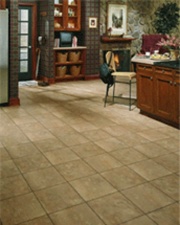Difference between revisions of "Congoleum"
Jump to navigation
Jump to search
(username removed) |
|||
| (2 intermediate revisions by 2 users not shown) | |||
| Line 2: | Line 2: | ||
== Description == | == Description == | ||
| − | [Congoleum] A registered trademark for a printed [ | + | [Congoleum] A registered trademark for a printed [[linoleum]] floor covering. Congoleum was first sold in the 1920s with a simulated wood-grain pattern for use as a border for rugs or linoleum. It was manufactured in a three-foot wide strips using asphalt material from the Belgian Congo (hence the name). Beginning in the 1950s, the Congoleum name was used for a vinyl floor covering products. |
| − | == | + | ==Resources and Citations== |
| − | + | * Congoleum: [https://www.congoleum.com/ Website] | |
| − | Congoleum: [ | ||
| − | |||
| − | |||
* Thomas C. Jester (ed.), Thomas C. Jester (ed.), ''Twentieth-Century Building Materials'', McGraw-Hill Companies, Washington DC, 1995 | * Thomas C. Jester (ed.), Thomas C. Jester (ed.), ''Twentieth-Century Building Materials'', McGraw-Hill Companies, Washington DC, 1995 | ||
Latest revision as of 11:27, 4 July 2022
Description
[Congoleum] A registered trademark for a printed Linoleum floor covering. Congoleum was first sold in the 1920s with a simulated wood-grain pattern for use as a border for rugs or linoleum. It was manufactured in a three-foot wide strips using asphalt material from the Belgian Congo (hence the name). Beginning in the 1950s, the Congoleum name was used for a vinyl floor covering products.
Resources and Citations
- Congoleum: Website
- Thomas C. Jester (ed.), Thomas C. Jester (ed.), Twentieth-Century Building Materials, McGraw-Hill Companies, Washington DC, 1995
